Reflecting on Privilege and Pupil Premium
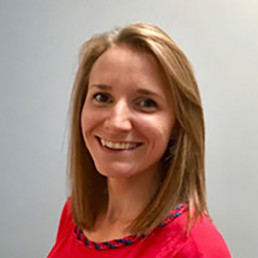
Written by Gemma Hargraves
Gemma Hargraves is a Deputy Headteacher responsible for Safeguarding, Inclusion and Wellbeing.
I recently attended a national Pupil Premium Conference in Birmingham. The first speaker asked for people to raise their hands if they have personally experienced poverty – I have not, so I did not raise my hand. The number of people who did was striking. I was reminded of my experience at Bukky Yusuf’s session at the first Diverse Educators conference when we were asked how many boxes we tick in terms of diversity. I am very aware of my luck, my privilege, and whilst my father would have proudly proclaimed his working class roots he made sure I had a comfortable upbringing never wanted for anything.
Spending the day surrounded by educators who care deeply about supporting students and families eligible for Pupil Premium I was struck by the need to get to know these students at my school better. Since joining the school in September I know some very well, for various reasons, but others I have not met yet. Sean Harris’s keynote was compelling about rewriting the story of disadvantage in schools and communities.
We cannot assume all students in receipt of Pupil Premium funding face the same challenges. When I say “we” I mean myself, as Deputy Headteacher in charge of Pupil Premium strategy, but all teachers and staff in schools. Vital here are Form Tutors who see the students every morning and offer a caring and consistent welcome. Also, Receptionists, canteen staff, all teachers and leaders in schools. “We” here should also mean policy makers – those who decide who qualifies for Pupil Premium, and Service Pupil Premium, and who doesn’t but who also need to be supported (of course this is all students but I am especially thinking of those who are only just above the Pupil Premium qualifying line, disadvantaged sixth formers, of young careers, of others with additional needs). We must all endeavour to know these pupils as individuals and to give them opportunities to shine.
There are practical and logistical challenges of course. Schools Week this week reported that school will have to wait until May to find out their pupil premium funding allocations for 2024-25. The data was supposed to be out in March but had been hit by a ‘problem’ with identifying eligible reception pupils. This clearly makes it more challenging for schools to budget and perhaps recruit but we just not lose sight of the children affected. Similarly, when focusing on outcomes, Progress 8 or some other measure we must remember there are individual students and families behind these numbers.
Of course, our approach must be intersectional. A child is not only “Pupil Premium” they may also be a devout Muslim, disabled, a child of LGBT+ parents or indeed all or none of these but we will only know and be able to celebrate this if we get to know the pupils and families better. We must find funds to support them in ways they need, not what we assume will be generically helpful.
And while literacy is of course important and key to probably every Pupil Premium strategy, and improving educational outcomes can be transformative, we must also focus on cultivating a sense of belonging, confidence and joy. I’ve been doing a lot of work on inclusion, diversity and belonging in schools over the past few years, but this conference gave me a renewed focus on poverty and inequality. In the spirit of pledges from previous WomenEd and DiverseEd events, I am now committing to spend more time reading, thinking, and researching about poverty and inequality in my community but also, of course, getting to know the students and families so they can truly flourish.
A Class Apart
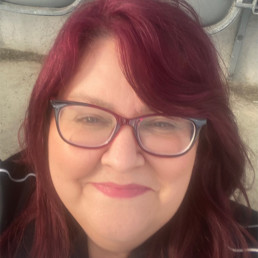
Written by Dr Teresa Crew
Dr Teresa Crew SFHEA is a Senior Lecturer in Social Policy with research interests relating to various social inequalities. More specifically Dr Crew's research explores the barriers faced by working class people in education. She is the author of the book "Higher Education and Working Class Academics: Precarity and Diversity in Academia" (Palgrave Macmillan, 2020) which examined the experiences of working class academics. Her second book, “The Intersections of a Working Class Academic Identity. A Class Apart”, will be published by Emerald in July 2024.
The echo of footsteps resonating through university hallways often carries with it a narrative of unearned advantage. This is in stark contrast to the uphill climb some have faced just to set foot on these grounds. For many working class academics (WCAs) like myself, each step reflects complex feelings of taking pride in rising above class constraints combined with a persistent sense of unease that we do not fully belong within these elite spaces. Far from being unique, this reveals that despite loud diversity rhetoric, quiet biases continue obstructing the WCA experience.
My extensive research incorporating over 250 interviews and surveys WCAs across the UK over the past 5 years reveals systemic barriers continue to make academia an inhospitable environment for many scholars from disadvantaged backgrounds. Nearly 75% faced ingrained classism subtly woven through campus culture via small slights eroding confidence in belonging. These obstacles are likely deterring talented potential working class scholars from pursuing academic careers.
Classist microaggressions served as the ever present undercurrent with manifestations ranging from derogatory comments questioning their credentials and mocking regional accents. Women endured layered inequities – both gender and class biases. Unpaid service tasks consumed valuable time otherwise dedicated to scholarly writing necessary for advancement, reflecting embedded biases limiting their mobility. Ethnic minority WCAs encountered underrepresentation and racialised stereotypes that questioned their intellectual capacity, coupled with the assumption that their presence was simply a result of diversity initiatives rather than merit.
My research also exposed profound institutional fractures at the intersection of class and disability. Participants recounted struggles to obtain reasonable adjustments. This disregard for individual needs was particularly harmful for those reliant on precarious incomes, as the absence of family wealth amplifies their vulnerability.
Our lived experiences offer a crucial counterpoint highlighting how WCAs display remarkable resilience, strong “aspirational capital” and determination. WCAs typically serve as mentors, role models, and support systems for many marginalised students. We offer innovative teaching methods and curricular interventions aimed at uplifting excluded voices and dismantling entrenched hierarchies. These interventions, informed by lived experiences at the margins, adds unique depth and insight to WCA scholarship, making us invaluable assets that enrich the tapestry of academic discourse.
Despite our remarkable resilience and talent, WCAs often find their potential curtailed rather than nurtured. Hiring discrimination, promotion bias, and precarious employment create significant hurdles, constructing invisible yet potent barriers to curtail our career advancement. Overburdened workloads and the absence of tailored support networks further exacerbate these challenges, creating a “chilly climate” within academia that often discourages many WCAs from reaching their full potential.
We must actively dismantle these barriers by challenging entrenched structures and disrupting the harmful effects of classist practices that erode individual aspirations and stifle working class potential. This demands bold, systemic change.
Key areas of action include:
- #MakeIt10. To create real equal opportunities, we must end unfair treatment based on an individual’s social class background and add social class as a protected characteristic in the Equality Act 2010
- WCAs need stable employment with living wages, enforceable rights, and consistent hours.
- Targeted career development programmes and mentoring specifically for WCAs.
These strategic interventions, informed by the powerful narratives of WCAs navigating the system, hold the key to unlocking the transformative potential of an inclusive academia. Only then can we ensure that knowledge and empowerment reach all corners of society, shaping a future where the collective brilliance of diverse minds, regardless of background, can truly flourish.
‘I’m so glad we have one of you here!’
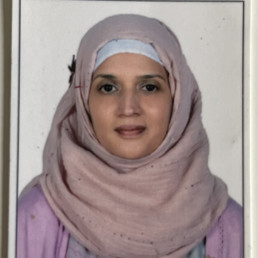
Written by Nabiha Mohamed
I am a British born Muslim Pakistani Geography teacher, who loves rocks and the Marvel Universe. I have spent 13 years living in Abu Dhabi but have now returned to the UK and am living in Bristol. I have taught in both comprehensive and independent schools, both of which I have enjoyed very much. I am a creative being who overthinks everything! I love to learn, and I have recently woken up to the fact that I am one of the few teachers of colour in this country and am now feeling the responsibility of this weighing heavy on my shoulders. Keen to ‘make a difference’ in the schools, I would love to connect with other teachers of colour in the UK.
We have been hit with comments like these throughout our lives. We have become accustomed to these ‘microaggressions’ in every aspect of our daily routines, and by ‘we’, I mean, people of colour.
As a British Asian Muslim woman (that’s a lot of labels already) born and raised in this country, I had never heard of the term ‘microaggressions’, until about 2 years ago in a CPD session at school. It was a turning point for me, in my career and my personal life. I have since been educating myself around the topics of unconscious bias, microaggressions and sense of belonging, particularly in schools. It’s been a rollercoaster ride since then, highs and lows in my teaching career, in my understanding of the issue and trying to work out how best to teach students to be assertive and staff to be ‘awake’. I am no professor in this area, I am not perfect, but I have grown to become passionate about this topic as one I can relate to and hopefully, an area I can help change in schools.
I have come to realise that many people who fire microaggressions at you, are often wonderful, kind, well-meaning people. They just don’t think about the gravity of their words; if you did have the courage to call them out on their inappropriate comments, they would be utterly devastated, which also makes us hold back on speaking up. Three recent examples I can think of (all said by adults):
- I can never learn the names of the girls who wear hijabs, they all look the same.
- I’m so glad we have one of you here now at school, the kids really needed someone like you.
- I loved culture day; it was my favourite day of the year! I loved all the costumes students wore; they were beautiful.
Costumes? I don’t wear my salwar kameez on Halloween, love.
I have delivered CPD sessions and assemblies on Unconscious Bias and Microaggressions to both staff and students recently, with the aim to give students of colour the confidence to speak up and say, ‘that’s not okay’ and to educate teachers on what many of their students go through daily as they go about their lives.
The thing is… I said in my assembly that I promised myself, whenever anyone was to say anything inappropriate directed at me, I would speak up and tell them. If ‘we don’t do this’, I said, ‘things will never change.’ Did I speak up when the above microaggressions came my way? Shamefully, no I did not. WHY, oh WHY did I not say anything?! Because, they were all lovely people who didn’t mean any harm. Because I, aged 47, did not know how to handle the situation at that exact moment, and if I couldn’t, how could I expect a child to?
However, I want to break the cycle. I want to have the confidence to say ‘errmmm, no’, and I want to teach students to be able to do the same in a respectful way, but I don’t know how to. We have school policies on explicit racism but there is nothing in means of reporting the implicit microaggressions from students or staff. Should there be? Is there a need? Do we ask our EDI Leader to speak to the guilty ones or should we have the guts to do it ourselves? But the interesting, or annoying thing amongst these questions in my head is, why am I struggling to speak up like I am the guilty one? I haven’t done anything wrong.
The Intersection of Diversity and Climate Justice
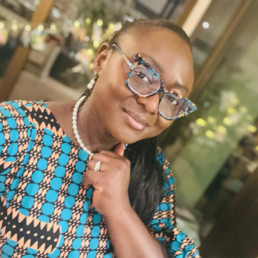
Written by Ndah Mbawa
Ndah runs Happier Every Chapter, a literacy service committed to helping schools and families improve diversity awareness and reading attainment through library diversity audits and the provision of diverse, inclusive and representative bestsellers for children. Her passion for decolonising mindsets within the school-to-workplace pipeline and supercharging the will/skill to read is shared by her teenage daughters, Kirsten & Aiyven.
The issue of climate change affects us all regardless of race, ethnicity, gender, or socioeconomic status. Be that as it may, it is becoming increasingly clear that certain communities are disproportionately more impacted by the effects of climate change, and that these communities often belong to groups who have historically faced discrimination and marginalization. The intersection of diversity and climate justice is one that cannot be ignored. It must be addressed if the hope to build a sustainable and just future for all is to be realised.
Take the uneven distribution of environmental burdens and benefits as a case in point of how diversity intersects with climate justice. Largely, communities of colour and low-income communities are more likely to live near polluting industries and toxic waste sites, and are therefore more likely to suffer from the health impacts of pollution and environmental degradation. If you don’t believe me, this Princeton University article may convince you. When I watched the critically acclaimed Erin Brokovitch in 2000, I didn’t realise the issue was as severe as Black People being 75% more likely to live in fence line communities than White People in the United States. These same communities are also more likely to experience the devastating effects of climate change, such as flooding, heat waves, and droughts. They are therefore facing a double burden: more likely to be exposed to environmental harms, and more vulnerable to the impacts of climate change. Coming back to our shores, according to the Environment Agency, households within 20% of the most socially deprived areas in the UK have a greater likelihood of flood risk than households in less deprived areas. The Grenfell tower fire incident of 2017 revealed a deep division between the rich and poor. Had the cladding which the developers used as a case for climate change to reduce the operational energy/emission costs not been flammable, we wouldn’t be having this conversation. The tragedy of this community which even though located in one of London’s wealthiest boroughs had become the most unequal place in Britain, exposed the underlining gaping social inequalities in our society as well as poorly informed climate change/justice initiatives and weak control over conditions pertaining to the already constantly degrading state of low-cost renting. This Guardian article put it well when it said, “fire is an inequality issue”.
Whether in North America, Europe, Australia or Africa, the recognition of traditional knowledge and indigenous perspectives is waning to dire levels. Indigenous communities who have thrived and lived in harmony with the natural environment for thousands of years have developed sophisticated strategies for adapting to changes in the climate. However, today, these communities are often excluded from decision-making processes around climate justice and have little to no voice in shaping policy. Makes you wonder how much education on climate change reaches communities like this in the first place. Surely the Inuit communities in the Greenland or Quebec who are experiencing melting sea ice making hunting and fishing more dangerous and unpredictable wouldn’t mind contributing to initiatives that may affect the future of their natural environment? Maybe we are missing a trick. Maybe by recognizing and valuing traditional knowledge and indigenous perspectives, we can build more sustainable and resilient systems that are better equipped to address the challenges of climate change in those particular places. For the climate justice movement to be inclusive, equitable and authentic, diversity of the key players is critical. Being a global problem, it requires collective action with engagement of a wide range of stakeholders from all impacted communities whether that be the younger generation, women, global majority people and others who have traditionally been excluded from decision-making processes.
Suffice to say, the intersection of diversity and climate justice is a critical issue that demands our urgent attention and action. The hope of a sustainable and just future for all might be a bit of a struggle to achieve without the due address that this status quo needs. There’s no denying the impact and relentless onslaught of climate change but as a collective we don’t seem ready. Hurricane Katrina in 2005 showed just how much when the low-income communities in New Orleans were disproportionately affected because they lacked the resources to evacuate or rebuild their homes.
While we carry on with efforts to educate our generation, we mustn’t forget the younger generation who will bear the brunt of our actions and decisions. It is also vital to educate them on climate change and how they can limit its advancement. One excellent way to do this is through books. Have a read of our blog post with some amazing book recommendations to teach children all about climate change in celebration of Earth Day.
If you are an educator looking to improve the literacy outcomes of your pupils especially the lowest attaining 20% or you simply want to diversify your school library collection, then speak to us. Happier Every Chapter works with schools, academies across the UK to improve reading attainment and diversity awareness through diversity audits and monthly boxes/bundles of diverse, inclusive and representative bestsellers with different curriculum aligned themes each month.
Being Comfortable Being Uncomfortable
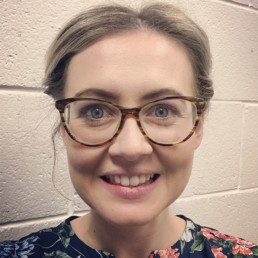
Written by Bethan Hughes
Bethan Hughes is a Second in English in a West Midlands secondary school and joint contributor to the LGBTQ+ toolkit on Diverse Educators.
I am a 33-year-old lesbian who has, probably only recently, become really quite comfortable in my own skin. The irony being that this is, probably only because of a lifetime of enduring being uncomfortable. When you exist outside the norms of society and outside of the dominant discourse, there is an odd sense of not quite ever being ‘inside’ where it is comfortable and instead watching from the other side of the metaphorical windowpane.
What does it actually mean to be comfortable? Comfortable is synonymous with safety, being content with where you are and what’s happening and maintaining the status quo. Comfortable keeps things the same. Being comfortable allows the same practices to continue. Which unless you are a white, heterosexual male might not be beneficial to you and contribute, whether directly or indirectly, to more challenges for others.
Yet to shatter, or at least wobble, the status quo involves putting yourself into a more uncomfortable position. It means speaking up in a meeting if you don’t agree with something or holding someone to account if their views or actions don’t align with what you believe to be morally right. It means having difficult conversations which might not go the way that you want them to go. It’s taking a deep breath, closing your eyes and being prepared to be the first domino to fall. And that’s tough. Especially when you could choose to take the easier route by keeping your mouth shut and trundling on with your daily business. And so, the cycle continues.
Why should I want to be uncomfortable, I hear you say? If we (truly) want to live in a just society then we all need to play our part. But we can’t do this if we are only focusing on the struggles that we personally face; as Martin Luther King said, “no one is free until we are all free.” If we can begin to take steps towards change by only being a tad uncomfortable, surely this is something that we can all commit to?
What might this look like in my educational setting?
- Always start from a place of mutual respect. If you are heading into difficult conversation territory, then this is always a solid start.
- When a student makes a comment or asks a ‘difficult’ question – explore it. Instead of ignoring a ‘that’s so gay,’ comment, address it and explain why the phrase is derogatory. Sometimes a conversation can begin to change someone’s attitudes or at least begin to challenge their ingrained value system.
- If you notice someone being spoken over in a meeting or their ideas not being heard; use your privilege to support that person or to credit their ideas. Consider when you are the most, or one of the most, powerful people in the room and how you can use this to amplify the voices of others. Or, if you don’t hold that power, can you join forces with someone else and support each other?
- Speak to share and not change minds. Use your voice to share your experience or your own feelings whilst being mindful that a conversation often won’t be enough to completely change someone’s mind. Share first and understand that changing minds can be a longer process.
- Speak from your personal experience and not on behalf of others. Also be open to credible sources when discussing information that is not personal to you.
- If you notice something that needs addressing, bring it up to those who have the power to change it. Perhaps the display in the science corridor only celebrates the achievements of men. Perhaps there is a lack of diversity in your English curriculum. Perhaps there is limited policy or support for your LGBTQ+ students. Be brave enough to have that conversation and to do something about it.
- Be patient with yourself and others. Change takes time but begins once we start to go into those uncomfortable spaces.
It’s easy to do nothing but if you have the privilege to do so; be 10% braver and have that conversation so that some of us who are perpetually uncomfortable, can be a little more comfortable.
Faith is too often seen as a barrier to LGBT+ inclusion, so we’re launching new resources to change this
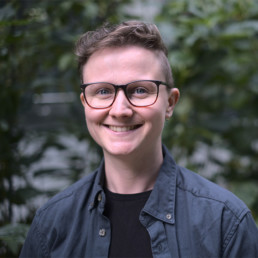
Written by Amy Ashenden
Director of Comms and Media/Interim CEO, Just Like Us, the LGBT+ young people’s charity.
As the new Interim Chief Executive of Just Like Us, my aim this year is to ensure more schools than ever have the tools they need to support their LGBT+ young people.
For several years now, School Diversity Week has been celebrated by so many incredible educators across the UK, showing young people that being LGBT+ is nothing to be ashamed of. Last summer, more than 5,000 primary and secondary schools took part. This year, 26-30 June, I believe it’s vital that schools with intersecting communities have the resources they need to celebrate School Diversity Week.
From faith schools to Welsh-speaking communities and primary schools, Just Like Us will be providing new sets of resources that cater specifically to the educators that need tailored LGBT+ inclusion tools the most. When half of young people (48%) tell us that their school hasn’t given them positive messaging about being LGBT+, it’s clear to me that we have a long way to go and that to change this, schools need the right kind of resources that speak to their individual ethos and community.
Our new independent research has found a third of teachers (30%) say faith has been a barrier to discussing LGBT+ topics in school. More than 7,000 UK teachers took part in our survey this February, revealing an indisputable need for resources that are both LGBT+ and faith inclusive.
That’s why we’ve launched a new series of faith and LGBT+ inclusive resources for Anglican, CofE, Catholic, Jewish and Muslim school communities. From primary assemblies to worksheets and videos featuring LGBT+ young people talking about their faiths, the resources are designed to give educators the tailored tools they need to celebrate School Diversity Week in a way that makes sense for their community. We have also worked in collaboration with LGBT+ faith-led organisations Keshet, Hidayah, One Body One Faith and Quest to develop these resources in a way that really speaks to the communities they’re designed to support.
In faith schools, the research found that 46% of teachers had previously found faith to be a barrier to talking about LGBT+ topics in the classroom, compared to 25% at non-faith schools. I believe it’s vital that we now provide the tools educators at faith schools need to support their young people who may be LGBT+ or have LGBT+ families.
Interestingly, just 3% of headteachers said that faith has always been a barrier to discussing LGBT+ topics.
A lack of LGBT+ inclusion in schools is so rarely about a lack of willingness but instead due to a historic lack of suitable resources that empower educators to get started on their journey. It’s also important that we remember that LGBT+ and faith communities are never totally separate – as you’ll see in the resources, faith is very important to many LGBT+ young people and to suggest that there’s no overlap just isn’t reality. You can absolutely be LGBT+ or an ally and belong to a faith – being Jewish and a lesbian, I know this reality well.
It’s also really important that we don’t erase the fantastic LGBT+ inclusion work that many faith schools are already doing with their pupils. St Stephen’s CofE Primary School in London is just one example of this. Nicola Collins, who works at the primary school, is a huge advocate for celebrating School Diversity Week and won our LGBT+ Inclusive Teacher of the Year award in 2022. She explained: “As a school, we feel passionate about challenging stereotypes and homophobic language. As a result, the children in our school are well informed and accepting of all people no matter who they are!”
We hope that these new resources will be a gamechanger for schools with faith communities to celebrate School Diversity Week this 26-30 June. We really welcome educators to get in touch with your feedback or any questions you might have about making LGBT+ topics faith inclusive.
What if we replace toxic masculinity with intersectional masculinity?
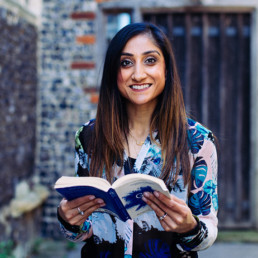
Written by Zahara Chowdhury
Zahara is founder and editor of the blog and podcast, School Should Be, a platform that explores a range of topics helping students, teachers and parents on how to ‘adult well’, together. She is a DEI lead across 2 secondary schools and advises schools on how to create positive and progressive cultures for staff and students. Zahara is a previous Head of English, Associate Senior Leader and Education and Wellbeing Consultant.
In 2021, I led a conference at Beaconsfield High School on how schools can overcome toxic masculinity by revisiting their gender behaviour policies. 16 schools, students and parents heard from Hira Ali, Harry Moore, Leila May Lawrence, Aaron Pandher and the Global Equality Collective, The Terrence Higgins Trust and Headteacher, Peter Tang, on how we can create equitable behaviour policies and create a culture of respect in secondary schools. Over a year on, the discussion continues as schools are now tasked with tackling the rise of online hate and misogyny fuelled by Andrew Tate.
In schools, amidst the pressures of a recruitment crisis, a cost of living crisis and exam period, education about misogyny and sexism is being called on. As someone who is heavily involved in leading, researching and writing about this area, I worry, as an educator, as a parent and as a human, we’re talking more than we’re listening. An uncomfortable opinion perhaps: in the age of social media, content consumption, likes, comments and information overload we are overwhelmed with the problems, the dangers and fear. Whilst these feelings may be justified, we are looking for quick solutions before we understand the problems of toxic masculinity.
For those of us who parent and teach, we know young people can be insecure sponges, looking for a sense of belonging, validation and acceptance. Amidst the doom and gloom of school, online comparison and tackling their mental health, they’re also looking for fun. We know how impressionable young people are. We know for the most part, they just want to fit in – and therefore they look and listen for where this might be. So many have found a sense of belonging, entertainment and acceptance online with accounts and material that perpetuates – in this case – historic and systemic misogyny. The conference I led and articles I’ve written are tools to support schools to resolve this. What I realise now, though, is I was yet again facilitiating a great deal of information (albeit, valid and necessary) without listening to those it affected: the boys.
Professor Scott Galloway explains that our understanding of masculinity has been misconstrued and in many ways, caught up, in toxic masculinity – or what we perceive to be toxic masculinity. The data, research and case studies show that young men need support, whereas social media and the news imply masculinity is the problem – this all becomes a vicious cycle of information where many of us end up none the wiser.
Of course, as a woman and a woman of colour, I am well aware of the whataboutisms, counterarguments and rebuttals that may be flung my way. For the sake, success and safety of all our students, we now need to pause and create space for intersectional male experiences of our young people.
I say this because, as simple as it may sound, every young boy we come across has a different lived experience and whilst we hurry to find out how to make sure our children are safe, educated and staying away from the vile content they come across online, are we actually listening to them?
- Are we listening to the boy who has sisters he loves and respects, and knows exactly how to ally with women – because he is surrounded by strong people?
- Are we listening to Black and Asian boys who are still living amidst the trauma of George Floyd’s murder, and recently, the tragic murder of Keenan Anderson?
- Are we listening to Muslim boys who feel their faith and identity are constantly under a negative spotlight, or a spotlight entrenched in patriarchy and misogyny?
- Are we listening to boys who don’t like sport, but don’t know where else to go on the school playground?
- Are we listening to boys who are gay and don’t know where to turn, who to talk to, out of fear of what may happen?
- Are we listening to boys who are constantly told to be strong, but don’t know how?
- Are listening to boys who are vulnerable, without dismissing their feelings?
- Are we listening to boys who are struggling with their mental health but don’t know where to turn?
- Are we listening to boys who are told they will take on responsibility for the family once they’re old enough?
- Are we listening to girls who have wonderful relationships with their fathers and brothers and are collectively working together for equality and equity?
- Are we listening to boys and girls who share healthy relationships?
I could go on, and on and on. And, I know the same questions apply to women – intersectional feminism is perhaps a more well known term than intersectional masculinity. Equally, there is an absolute understanding and appreciation that intersectional masculinity is systemically privileged and of course, within that hierarchy of privilege, some men are more privileged than others. Having taught boys for a good few years and now, parenting a boy, I think part of the solution here is not just to teach them, but to listen. To understand who they are and who they want to be; to listen and then question their understanding of social norms, gender stereotypes and more. To understand their relationships, their communication, their hobbies.
There is research to suggest teenagers fare better in group therapy; the best conversations I’ve had with boys is in small groups, in the classroom. It’s the best place to listen to their lived experiences, challenge and discuss their views and form trusting and safe relationships – for them and young female students, too. Plus, the banter can be pretty entertaining.
Listening is a part of a wider solution and I know we are all still trying to figure out what that is. For now, though, let’s change their algorithm and introduce them to positive online male role models such as:
- Steven Bartlett
- Vex King
- Jay Shetty
- Marcus Rashford
- Ali Abdaal
- Dr Alex George
…and I’m sure the list can be much longer. There is absolutely a need to rid systemic and social structures of misogyny. Part of that battle – perhaps, part of the solution – is to listen to the experiences of young men too.
Diversity and inclusion: what do students think?

Written by Lulu Frisson
Lulu Frisson is a 15-year-old secondary school student from Birmingham.
“But who benefits from all this stuff on inclusion and diversity at school? Do students actually care?”
My dad leans over the table, eyes bright, his questions hanging in the air between us. Both of my parents are teachers and occasionally conversations like these – about anti-discrimination work within education – will crop up at the family dinner table. Truthfully, I find it fascinating. I tick a lot of diversity boxes myself as a biracial, bisexual, autistic teen girl. I often think about my identity and how schools can be more accepting of students from minority groups, but conversations with my parents about diversity in education make me realise that there’s still a long way to go when it comes to creating inclusive learning environments.
I often think of the awful murder of George Floyd in the summer of 2020 and the subsequent international Black Lives Matter protests as the sort of ‘explosive’ point for anti-discrimination work in schools and workplaces. In my mum’s primary school, the sudden heightened awareness around race within white spaces began igniting conversations around the lack of diversity in children’s books. In my own school, students began demanding change – to the curriculum, to the teaching staff, to the extracurricular clubs on offer – and we were largely listened to, encouraged to recognise and speak out against injustice. To answer my dad’s question – students undoubtedly cared about improving diversity and inclusion. And we absolutely do still care.
And yet the contrast between pupils’ anger about social injustice in summer 2020 and our current vocal demand for change is stark, and it’s something that needs to be addressed if schools wish to continue making meaningful progress with diversity and inclusion. Our reaction to the horrifying events of that summer was loud, passionate and angry because being loud, passionate and angry is often the quickest way to drive change. Now, having seen some positive changes implemented in my own school – the creation of an annual Culture Week, for example, and the increased awareness around the texts we study – I think a lot of us have stopped talking about diversity and inclusion simply because we’ve come to believe that those changes may be the most our school is able or willing to make.
But schools can’t let the conversation die down. Students who are part of minority groups still experience discrimination regularly – so much so that I believe we’ve become somewhat de-sensitised to it. I’ve noticed that my classmates from minority groups often brush off or downplay personal incidences of discrimination, and it’s something I find myself doing too. If a teacher jokes about how ‘exotic’ I am, my immediate reaction is usually to laugh it off. If a classmate makes an ignorant comment about autism, or someone tells me that bisexuality does not exist, I tend to excuse them through a hopeful lens of forgiveness.
What this really shows it that there’s still a certain expectation for LGBTQ pupils and students of colour to extend endless grace and compassion to classmates or even teachers who offend us; from as young as primary school, we’re often told to ‘be the bigger person’ when it comes to conflict, or to stay quiet and not cause a fuss. As a result, a lot of comments we hear that would absolutely be considered discriminatory get unreported in schools, brushed off as insignificant or normalised – with inevitably damaging impacts on student mental health.
That’s why diversity and inclusion work within school is so important. I remember listening to an assembly about microaggressions and realising that it was okay to feel hurt and uncomfortable by comments a lot of us students have come to excuse as banter, curiosity or ignorance. The simple acknowledgement that discrimination exists in forms other than outright abuse was so impactful, and I left that assembly feeling like my identity, and the struggles I’ve faced surrounding it, are valid. My parents sometimes talk about how it is ultimately up to policy makers to improve our schools and the culture created in them. And whilst longer term national change towards promoting equality in education is incredibly important, I’d argue that smaller immediate actions towards inclusivity can be just as meaningful.
For students who use different pronouns, for example, inclusivity might mean having teachers who respect and actively try to use gender neutral language in their classrooms. For me personally as an autistic student, inclusivity has meant being able to access things like fidget toys and a time out card, and receiving pastoral support in school. More broadly as an LGBTQ biracial person, I’ve felt most included and safe in lessons that include perspectives and examples of people from all backgrounds. If a teacher uses a case study of a same sex couple in biology class, for example, I’ll know that they’re accepting of LGBTQ people, and by extension accepting of me. It may sound trivial, but it often really is small actions that make the biggest difference.
So yes, students do care about diversity and inclusion. We notice the changes being made – or lack thereof – to our schools more than we might let on. Many students from minority groups naturally care deeply about continuing and improving our work on inclusivity, but the truth is that everybody, staff and students alike, need to too. To have the ability to not care about inclusion is undeniably a privilege. To be able to think about diversity solely at times that suit you, to be aware of inequality only when it is pointed out, to be oblivious to the fact that you are amongst the majority in the spaces you occupy – these are privileges that people from marginalised communities are persistently denied.
So it is not enough for allies to say they do not see colour, do not care about sexuality or do not think about gender. And, to extend on that, it is not enough for schools to hear minority students’ struggles or uplift our voices only at times that are convenient. Regardless of whether it’s Black History Month, Pride Month or a time like the summer of 2020, schools need to continue to actively listen to students from marginalised communities and be receptive to our suggestions – not only to create more diverse learning environments, but safer ones, too. We do not have the ability to leave aspects of our identity behind when we come to school, and we shouldn’t have to, either.
Why Don’t We Talk About Intersectionality in Schools?
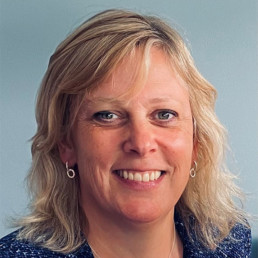
Written by Dr Jo Trevenna
Dr Jo Trevenna has over 20 years' experience of educational leadership from early years to post-graduate level. Her ongoing academic interests centre on Leadership and EEDI. Her company, Potential Education, offers leadership reviews, support and training and EEDI-focused school support.
There can’t be many of us still thinking that human identity is singular. Right? Aren’t we a combination of diverse characteristics that create and impact on our existence? Expectations and assumptions around combinations of characteristics are increasingly illuminated in societies, with light thrown on those who experience multiple discrimination and shade thrown on those who discriminate against those with different combinations of characteristics. The complexity around identity is foregrounded in explorations of intersectional discrimination. Yet intersectional disadvantage is not generally a focus for English schools.
Why?
Is it a lack of understanding and awareness or the lack of external accountability?
The Law
Critical awareness of the vulnerabilities faced by those with exact combinations of identity characteristics was first associated with the legal work of Kimberlé Crenshaw which looked into the discrimination experienced by African-American women in terms of ‘intersecting patterns of racism and sexism’ (Crenshaw 1991, p1243). Crenshaw asserted that anti-discrimination legislation in the United States did not actually protect African-American women because, when making legal claims against an employer, this particular group had to choose between a focus on either their race or gender, even though the discrimination they faced came at the ‘intersection’ of these two identity characteristics.
Section 14 of The Equality Act (2010) recognises the potential for discrimination pertaining to ‘combined discrimination: dual characteristics’ (Legislation.gov.uk 2010). The focus here is limited to direct discrimination against the combination of only two characteristics. More significantly, Section 14 has never, in fact, come into force. It just sits there in provisional status.
As it stands, therefore, the law does not adequately protect against intersectional discrimination and, in terms of English schools, there is no legal imperative to tackle intersectional discrimination.
Publicly Available Data
Published performance table data is hugely significant for schools. The first stage of the high profile ‘school and college performance measures’ website offers only a single-axis approach to pupil data. Some basic intersectional data is available on the ‘Explore Education Statistics’ section of the platform relating to ethnicity and disadvantage, disadvantage and gender, SEN and ethnicity. However, the data remains on cohort numbers and does not provide any information which may indicate the impact of those intersections on pupil academic performance, exclusions/suspensions and attendance. FOI requests can be made and the GOV.UK website also offers the facility for researchers through its new Grading and Admissions Data for England (GRADE) service. This service may be a significant step forward in terms of higher level transparency but it does not provide readily accessible data to the public on intersectional discrimination affecting pupils.
Data revealing the intersectional factors affecting pupils is available to school leaders and governors, local authorities and Ofsted via the ‘Analyse School Performance’ (ASP) secure access platform. Filtering mechanisms enable reports combining specific pupil characteristics, eg: boys with SEN, and scatterplot graphs make it relatively easy to identify patterns of underperformance because of key combinations of protected characteristics thereby highlighting potential impact of discrimination and flagging up need to address. Another school performance document is the Inspection Data Summary Report (IDSR), which is accessed on the secure ASP portal. The IDSR is a key document for Ofsted Inspectors when preparing to inspect a school and informs initial discussions with headteachers. Like the ASP tool, the IDSR does provide schools and Ofsted with a retrospective mini intersectional tool in its coding on scatterplots of the progress and attainment of pupils by binary gender classification and SEN status and deprivation status. However, there is no public access to this data.
To sum up: disadvantages experienced by pupils with specific combinations of identity characteristics in English schools are not readily flagged in publicly published school data. Perhaps Ofsted, which does have access to this anonymised intersectional data via the ASP and IDSR, has the potential to be the driving force in helping schools engage with intersectional discrimination.
Taking a sample of 68 Ofsted Section 5 inspection reports published in a six month period (not including those which inspected an already ‘Good’ school), there are only references to single-axis identity characteristics. In this sample, Ofsted, as the key inspection mechanism for schools, does not engage with the impact of intersectional discrimination on pupils. The lack of referencing in this sample of reports is not surprising given that Ofsted’s School Inspection Handbook only relates identity characteristics on a single-axis framework.
As it stands, then, there is no legal accountability, no easily accessible public data to enable transparent exploration of the impact on pupils and little Ofsted engagement with intersectional discrimination and disadvantage. Right now, without the external accountability structures, it is the choice of school leaders whether or not to adopt an intersectional approach to their schools. Given that most of us agree that identity has multiple components, it is surely time to explore how an intersectional approach can throw light on intersectional disadvantage and discrimination and therefore help schools to tackle it head on despite the lack of an external accountability framework.
Normalising Difference
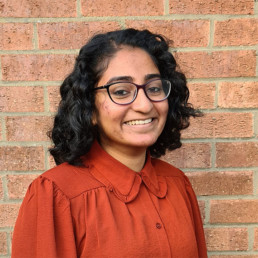
Written by Amrutha Anthony
Amrutha Anthony is a trainee teacher at Basingstoke SCITT (BASCITT).
Difference is daunting.
There are many differences and mine is that I am not British. I am an Indian who grew up in the UAE. This was not a problem by itself. However, I had decided to train to teach Secondary English.
I would be a foreigner teaching English to the English.
The humour was not lost on me, nor were the apprehensions.
However, I was lucky enough my main placement school is also where I’d gotten to work at as an LSA for a few months before my training began. From the very first day my school made me feel like I had always been part of the school community. From my days since I have realised why.
My school hosts a diverse community of both staff and students. Last year, 56% of the students were from ethnic groups, and English was second language to 31% of the student populace. My school’s diversity has been channelled into an attitude of inclusivity that permeates every interaction that happens here. In response to the Basingstoke & Deane Inclusions and Diversity Partnership launched in 2021, the school set up a Diversity Lead. Under her guidance, around 60 students signed up to be EARAs – Equality and Rights Advocates. They were trained to challenge and be upstanders in a gentle way. They were also responsible for training other students formally (assemblies) and informally (personal conversations). The EARAs proposed and piloted workshops for KS3 students on LGBTQ+, neurodiversity, and race. Historically, students also led a sign language workshop that proved quite popular.
School students support all forms of diversity because their own uniqueness is celebrated here. I remember being in a history class last year when they were learning about Black history in the UK. Whilst Black history in the US has become popular knowledge, the UK perspective was entirely new to me; together with the students, I soaked up this new angle in fascination. I found out later that this lesson was a result of the school wanting KS3 curriculum to reflect the histories of all its students. This commitment to year-round inclusivity made the schools Black History Month celebration so much more sincere.
My school is also twinned with a school in Cameroon, by the Portsmouth Diocese to which the school belongs. When it was safer, staff and students had gone over to volunteer; now the school supports the college through fundraising activities. On Diversity Day last year, staff and students were encouraged to come dressed in traditional attire and to take part in an evening celebration of all the ethnicities in the school. This mufti day was made meaningful when all staff and students donated a pound each to be sent off to Bamenda.
Being a single faith school, my school often faces a question from the outside about how inclusive it is of other faiths. Those on the inside, however, have the answers. Before the pandemic, my school hosted a student-led interfaith question time. The students were supported in preparing their answers by the RE department, yet they took the lead in bringing the answers to the student populace. The school also hosts an annual multi-faith trip where Year 8 students visit a gurdwara, a mosque, and a mandir. They come back with their textbook knowledge improved by a real-world awareness of how different faiths practice their beliefs. This awareness is strengthened by the practical steps the school takes to accommodate all faiths. A prime example would be the student-led Ramadan assemblies that remind students to be supportive of their fasting peers. Staff are also asked to make allowances for fasting students and the school shifts other celebrations to ensure they do not miss out. A group of Muslim students make regular use of an RE space to pray during lunchtimes and plans for a Muslim prayer space next to the chapel are soon to be realised.
It has been heart-warming to hear parents talk about how this level of support makes their children feel safe at school. In addition to racial and religious diversity, the school also supports children with additional needs. Last year this was 8% of all students. As an LSA, I had been in classes with many of these students and it was delightful to see how the other children wholeheartedly accepted the SEND children. When the SEND children behave differently or are given additional support, none of the other children bat an eyelid. I have heard a SEND child screaming outside and I have seen my class calmly continue with their work; no one wanted to look out the window or even seem surprised. This to me showed true inclusivity – not just about understanding differences and accepting them, but having differences normalised.
Here at school, it is perfectly normal for me to be different.
Here at school, it is perfectly normal for me to be teaching English.
Here at school, I can grow and learn and the only thing that affects my ability to succeed is the amount of work I put in.
I write this as a student teacher, but I write this echoing the sentiments of hundreds of children who walk in each day. I write this having been cherished and supported by all members of staff. I have only been here for about half a year, but I have never felt so accepted anywhere else. The ethos of the school guides the community in respecting the innate dignity of all human beings. The school way is to ‘walk with each other’ and this is practiced by everyone from SLT to support staff to students.

